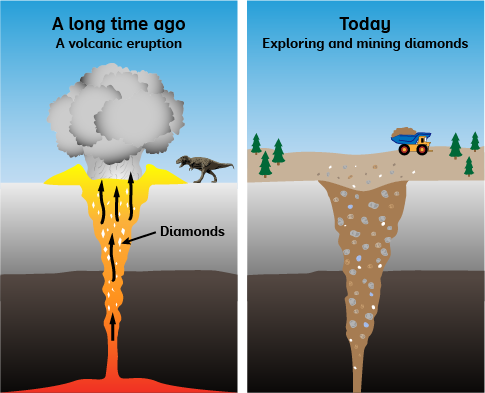When we think of a diamond, most of us probably think of jewelry. However, each diamond has quite a long journey before it becomes part of a ring or a necklace.
Diamonds form at about one hundred miles underground. Deep within the earth, in a zone called the upper mantle, the environment is very hot and has strong pressure. These special conditions cause carbon atoms to bond together, eventually forming diamond crystals. Carbon is a common chemical element found throughout the earth. It is extremely difficult, if not impossible, to directly obtain diamonds from the upper mantle. The diamonds that are mined today are the ones that have been pushed toward the surface by ancient volcanic eruptions.
Not all eruptions are powerful enough to push diamonds to the surface of the earth. The eruption has to be violent and deep. When the eruption reaches the surface, it builds up a pile of volcanic material that cools quickly. The diamonds are contained within the pile. In order for diamonds to maintain their carbon structure after they travel to the surface, the eruption has to happen very quickly. If the diamonds are traveling too slowly and for too long, they will change their structure and turn into graphite along the way.
Scientists are still uncertain as to how long it takes for diamonds to form. It can happen over periods as short as days or weeks. Or, it could take millions of years for carbon atoms to move close enough that they start to bond. As with other crystals that grow inside the earth, the formation of diamonds is unlikely to be a continuous process. The diamonds may start to grow, and then the process may be interrupted by a change in temperature or pressure. After sitting for millions, or even hundreds of millions of years, the diamonds may start growing again. Due to these factors, it is hard to be certain of the exact growth period of diamonds.
